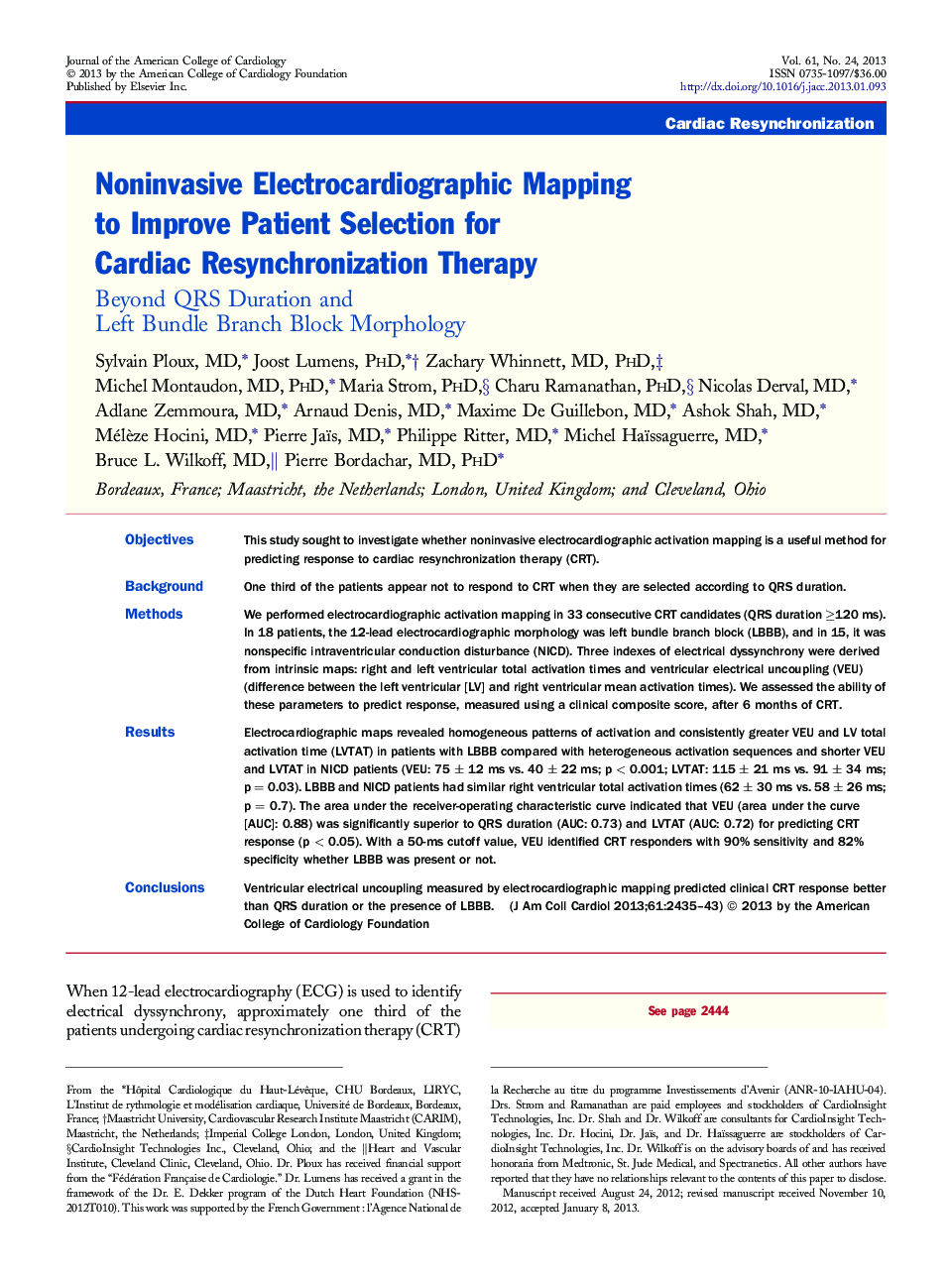| کد مقاله | کد نشریه | سال انتشار | مقاله انگلیسی | نسخه تمام متن |
|---|---|---|---|---|
| 5983246 | 1577154 | 2013 | 9 صفحه PDF | دانلود رایگان |

ObjectivesThis study sought to investigate whether noninvasive electrocardiographic activation mapping is a useful method for predicting response to cardiac resynchronization therapy (CRT).BackgroundOne third of the patients appear not to respond to CRT when they are selected according to QRS duration.MethodsWe performed electrocardiographic activation mapping in 33 consecutive CRT candidates (QRS duration â¥120 ms). In 18 patients, the 12-lead electrocardiographic morphology was left bundle branch block (LBBB), and in 15, it was nonspecific intraventricular conduction disturbance (NICD). Three indexes of electrical dyssynchrony were derived from intrinsic maps: right and left ventricular total activation times and ventricular electrical uncoupling (VEU) (difference between the left ventricular [LV] and right ventricular mean activation times). We assessed the ability of these parameters to predict response, measured using a clinical composite score, after 6 months of CRT.ResultsElectrocardiographic maps revealed homogeneous patterns of activation and consistently greater VEU and LV total activation time (LVTAT) in patients with LBBB compared with heterogeneous activation sequences and shorter VEU and LVTAT in NICD patients (VEU: 75 ± 12 ms vs. 40 ± 22 ms; p < 0.001; LVTAT: 115 ± 21 ms vs. 91 ± 34 ms; p = 0.03). LBBB and NICD patients had similar right ventricular total activation times (62 ± 30 ms vs. 58 ± 26 ms; p = 0.7). The area under the receiver-operating characteristic curve indicated that VEU (area under the curve [AUC]: 0.88) was significantly superior to QRS duration (AUC: 0.73) and LVTAT (AUC: 0.72) for predicting CRT response (p < 0.05). With a 50-ms cutoff value, VEU identified CRT responders with 90% sensitivity and 82% specificity whether LBBB was present or not.ConclusionsVentricular electrical uncoupling measured by electrocardiographic mapping predicted clinical CRT response better than QRS duration or the presence of LBBB.
Journal: Journal of the American College of Cardiology - Volume 61, Issue 24, 18 June 2013, Pages 2435-2443